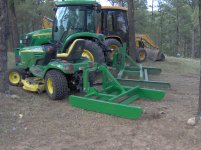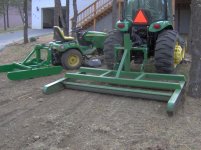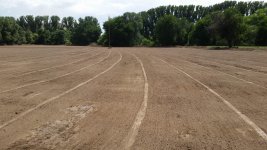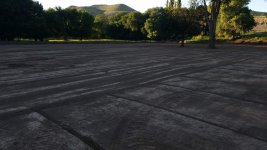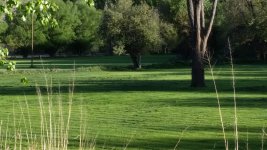jenkinsph
Super Star Member
I would never even consider a conventional box blade for 50 acres of ridges. I've spent many years working on flood-irrigated land that needed flattening for each crop change.
A common choice now is the laser-guided wheeled box blade. But the laser guide isn't needed if you aren't flood irrigating and just want to smooth the land.
First choice would be something long, with a center blade.
View attachment 469978
Second choice would be a tongue-pulled wheeled scraper or box blade.
View attachment 469979
If I couldn't get those, I'd build a wooden or steel float like this.
View attachment 469980
Bruce
Bruce,
You are correct that a laser guided drag box is a better choice. I use a Topcon RL 200 2/S laser and the LSB110 receivers for my work. Most people here would not be willing to put out $3850 for a laser and still have to buy a tripod and $1700 receiver to go with it. I looked at the equipment the OP had to work with and made suggestions.
I do a lot of flood irrigated fields in southern New Mexico and by the time you get this far south the water is limited and precious. It is important to get the fields "right".
